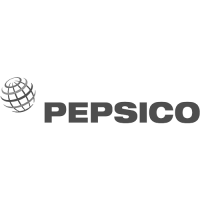Presenting in a Bad Economy

How a new approach to presentations could spur economic growth
The economy is hurting. And all around the world, companies are cutting corners to cut costs. And cutbacks on the design of professional presentations are indirectly affecting the bottom line, as companies tackle the writing, design, and delivery of these vital communications tools in-house. But during these trying times companies should be increasing – not decreasing – their investments in professional presentations. If companies around the world recognized the importance and ROI of a professional presentation, we could have a well-needed shot in the arm to the global economy.
Presentation Design for the everyman
For many years, presentation design was the domain of an elite group of audio-visual marketing designers. But with the release of PowerPoint 2007, everyone was able to create sophisticated graphics with ease. SmartArt, multiple masters, and a host of other features made it simple and fast for anyone to create great-looking slides. Secretaries were now tasked with the design of the average office PowerPoint presentation. And many mid-level managers are forced to handle the development of the presentation themselves. And because PowerPoint is woven into the psyche of every educated person since the earliest days of school, most executives are comfortable with the application these days to help communicate their key concepts. But knowing how to use PowerPoint, and knowing the art and science of presentation visuals are not the same. Just as easily as PowerPoint has helped people to make good slides, it’s just as easy to make bad-looking slides too, explains Geetesh Bajaj of the website Indezine.com. “It’s easy to create great slides in PowerPoint; it is easier to create bad slides, especially if you do not have some design training.”
Many corporate PowerPoint presentations are designed by someone with a general knowledge of PowerPoint, and with minimal experience of presentation design or delivery. Consequently, these presentations often have diluted messages, or a home-made appearance, that detract from the professionalism of the company brand or image.
Corporations must recognize the importance of The Presentation. Firms frequently spend millions of dollars on marketing and branding, but handle their presentations in-house. Consequently, the visuals don’t reflect the true professionalism of a company, and weaken the marketing and sales efforts for front-line sales reps, who all-too-often are called on to create their own presentations.
By investing in presentation training for their in-house team, or hiring outside presentation designers for key projects, companies can achieve a world-class presentation design with a focused message…while keeping the economy moving.
Bare Bones: Cutting back on professional presentations
In the past few years, presentations have taken a more relaxed and informal style. As dress codes have relaxed in workplaces, so has the formality of the presentation. There’s less emphasis on glitz and glamour, and a greater focus on just the message. It’s easier than ever to find free and basic PowerPoint templates online. But these economical templates often lack the graphical sophistication and subtle nuances that more professional packages offer. Gary White, president of PresentationPro, an Atlanta-based company specializing in presentation designs and templates says his sales are down, as consumers seek cheaper ways to present their information. Ultimately, he says, “this is diluting the professionalism of the presentation and hurting the U.S. economy.”
In many corporate meeting rooms, there’s been a shift from elite and chic to average and acceptable. Presentation design and artistry is not as important anymore. People don’t seem to care as much if a white screen with 10 bullet points are on screen.
Presentations are often viewed as discussion documents, rather than a visual tool to tell a story. Most people want something grand and glorious, but ultimately, they feel more comfortable cramming gobs of bullets, text, and graphics onto a page.
If companies want a true ROI on their marketing and presentation efforts, they should invest the time and money to contract with a true presentation expert, or create a position in-house for a presentation specialist.
A new approach to presentations will boost the global economy
This economic downturn has translated to a reduction in professional PowerPoint designs and contracting with outside agencies. But during this time of financial challenges, companies should be exubrarent about their presentations. Everyone should be presenting, sharing the glories of their companies and initiatives! The “presentation” should be creative portals to our brains and ideas….as we capitalize on all the modern technology; graphics, video, webcasts, and social medial connections the modern world offers.
A company talking by phone to a prospect about their services is adequate. Integrating a web-based presentation or remote presentation tool could give them a competitive advantage. So many companies are still using the web in a two-dimensional style. Creating surveys for feedback, full screen graphics, animated text, can all set them apart from others…translating to a greater positioning as the industry expert…and driving traffic and sales.
By looking at the big picture of the power of a presentation, a company can gain a competitive advantage and boost in their sales. And if all companies revisited their presentation marketing strategy there would be a solid return on investment, that could jumpstart our economy, putting all players back on the path for greatness.
It’s easy to create great slides in PowerPoint; it is easier to create bad slides, especially if you do not have some design training.



























